Hair Bun Fashion in the 1960s
The 1960s saw the onset of a counterculture revolution, with accepted social norms in every realm from music to film to mode being challenged and re-written. Slowly, the bouffants, pompadours and poodle cuts that reigned over the previous decade were replaced by more than exaggerated, edgier hairstyles. Hair became a symbolic representation of social modify as women opted for shorter cuts and men grew out their hair to lengths previously considered unacceptable. Diversity encompassed the decade, with a whole host of styles moving swiftly in and out of fashion over the years.
Below, see our list of the nine well-nigh memorable hairstyles of the 1960s, and how they influenced and were influenced by the pop culture of the decade.
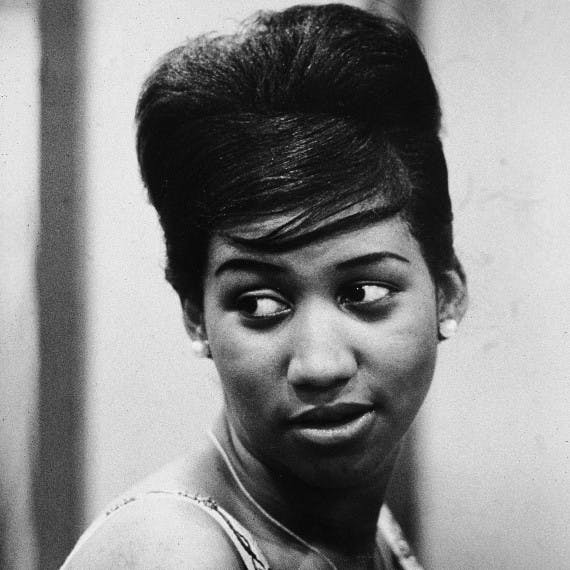 Image credit: Getty
Image credit: Getty
1. The Beehive
This sky-scraping mode was developed in 1960 by Margaret Vinci Heldt, a hairstylist based in Elmhurst, Illinois. The exaggerated expect, which involved piling i'south pilus on top of the head in a conical shape and setting it in place with copious amounts of hairspray, got its name due to the fact that it looked similar in shape and size to an actual beehive. Fabricated popular by the musical group The Ronettes, the beehive was seen everywhere on celebrities such as Aretha Franklin to idiot box shows like Star Trek.
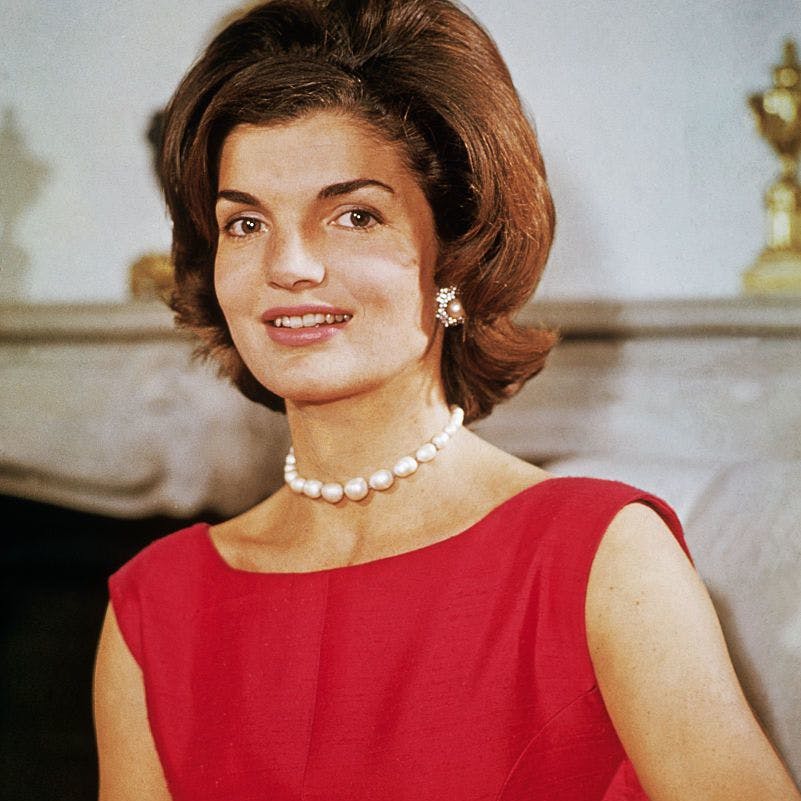 Paradigm credit: BETTMANN / Contributor / GETTY IMAGES
Paradigm credit: BETTMANN / Contributor / GETTY IMAGES
2. The Flipped Bob
In 1961, America elected its youngest president to date, John F. Kennedy, and with him, his young and impeccably stylish wife, Jacqueline Kennedy. Jackie Kennedy became a household name during the early part of the decade, becoming for many Americans the epitome of grace and class. Her signature hairstyle, a brusque, bob-like cut that flipped out at the ends, was copied by millions of women. Even superstars like Diana Ross and the Supremes and Elizabeth Montgomery sported versions of the expect fabricated popular by the First Lady.
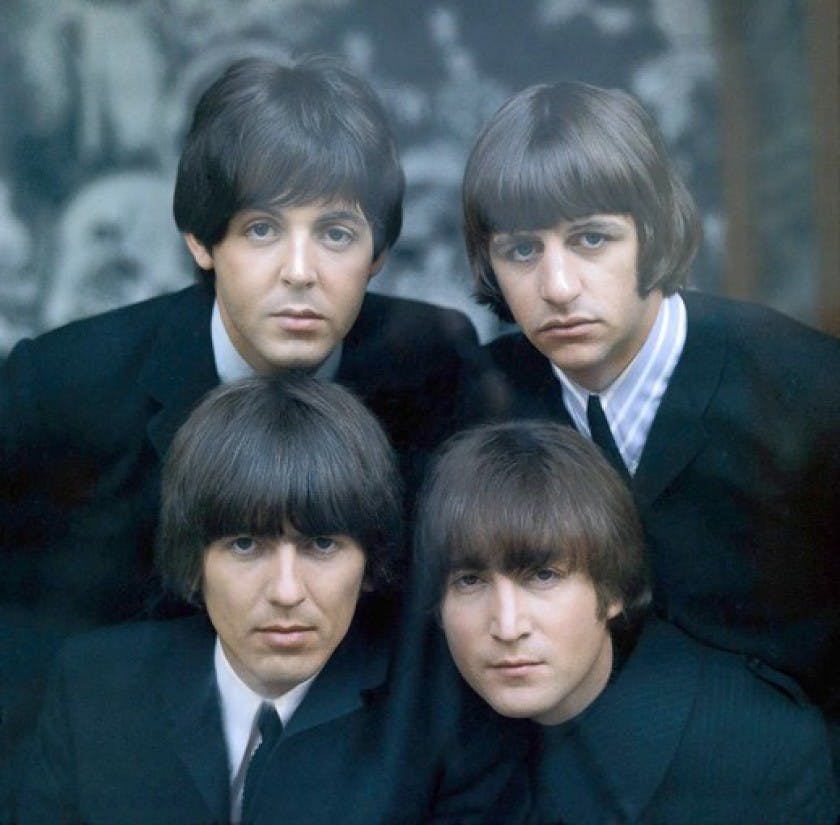 Epitome credit: Apple Corps
Epitome credit: Apple Corps
3. The Mop Top
The 1960s saw the germination of perchance the biggest band of all time, The Beatles. The Liverpool-based group climbed to unprecedented popularity in the United states of america, leading to what eventually became known equally "Beatlemania." Though their hairstyles evolved drastically over the years, The Beatles were initially recognizable for their "mop-acme" expect - a messy, longer cut that shifted away from the slicked dorsum, classic looks of the 1950s. The way became a symbol of rebellion, and was apace adopted by Beatle lovers effectually the world.
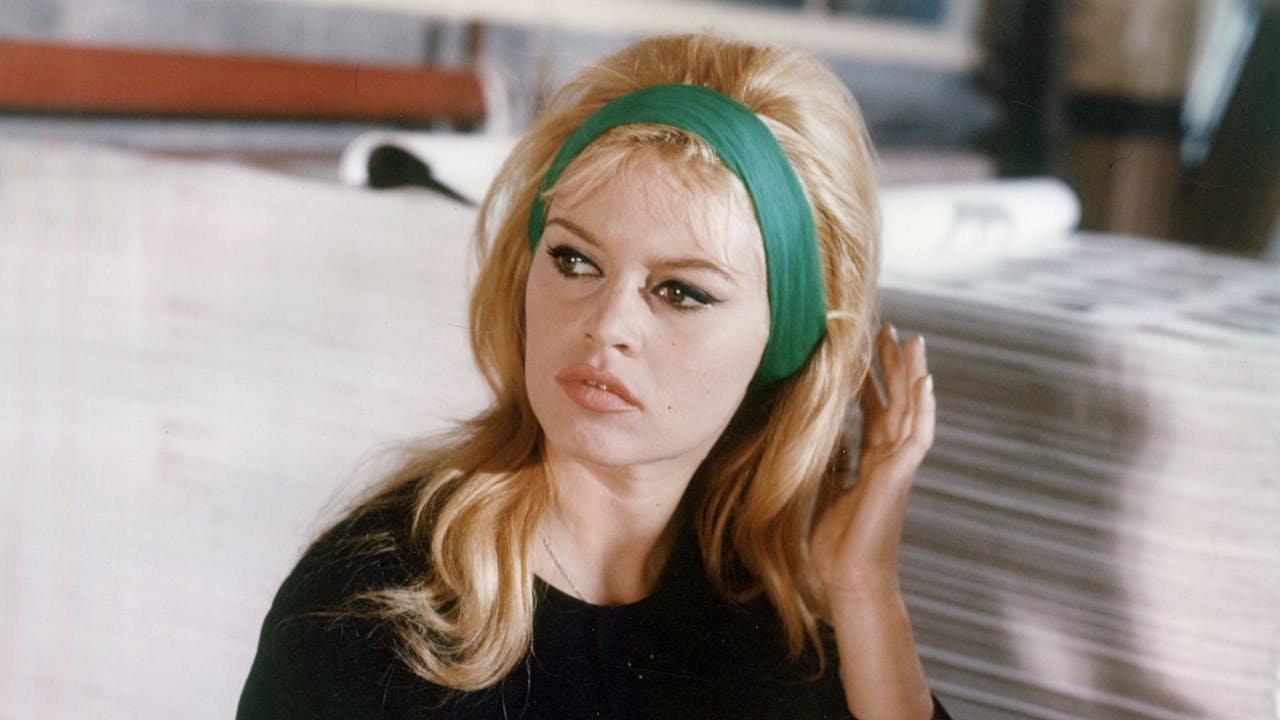 Image credit: Getty Images
Image credit: Getty Images
4. The Bombshell
During the 1960s, social taboos were continually challenged. Sexuality became increasingly embraced, especially in the realm of movie and cinema. This was reflected with bigger, sexier pilus. Actresses such equally Raquel Welch, Jane Fonda and Brigitte Bardot began wearing long, flowing, voluminous hairstyles that soon became synonymous with beauty and sensuality.
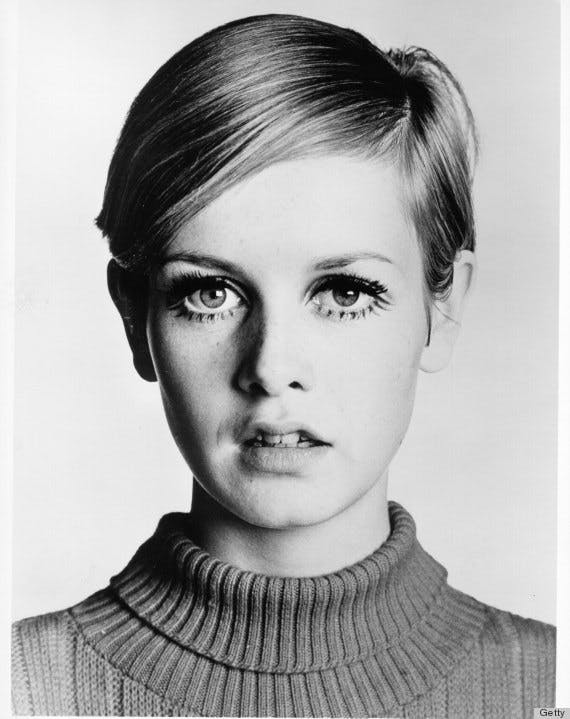 Image credit: Getty Images
Image credit: Getty Images
5. The New Pixie
On the exact contrary finish of the spectrum from big, bombshell hair, many women began opting for shorter, rebellious cuts. World-famous model, Lesley Lawson, better known equally Twiggy, flare-up onto the scene sporting a new version of the 1950s pixie, one that was sleek, shine and boyish. Soon, women began copying the famous side office and long, side bangs wait.
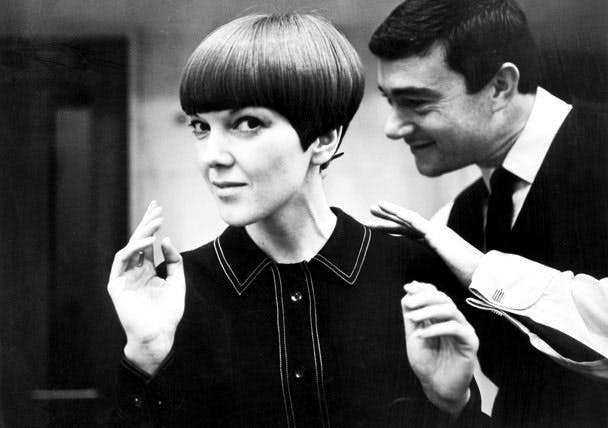 Image credit: Ronald Dumont/Getty Images.
Image credit: Ronald Dumont/Getty Images.
6. The Vidal Sassoon Cut
In close connection with the new craze for short, adolescent pixies, Vidal Sassoon, a British hairdresser who soon became established in the U.S., pioneered the modern bob during the mid-1960s. The geometric, Bauhaus-inspired looks he created were incredibly radical for the time, just that didn't stop Sassoon styles from exploding in popularity. Sassoon'due south heavily-publicized haircuts of such well-known celebrities as Nancy Kwan and Mia Farrow, began the demand for short, abrupt, angled looks beyond the country.
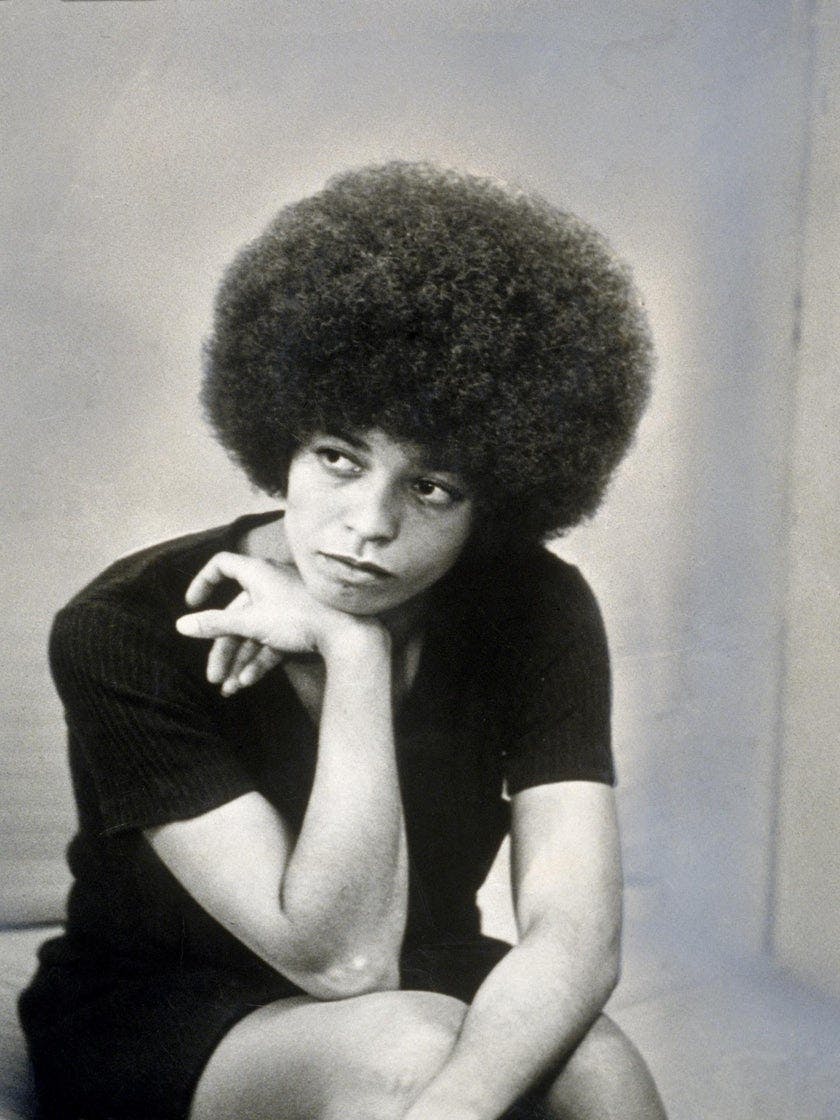 Image credit: Hulton Archive/Getty Images
Image credit: Hulton Archive/Getty Images
vii. Afros
Equally the African-American Ceremonious Rights Movement gained momentum during the '60s, it brought with it a renewed sense of identity to the African-American customs. In a witting break from previous styles that demanded that African-Americans endeavour to model their pilus after the styles of white Americans, the 1960s saw the increasing popularity of the Afro. Likewise known as the 'Fro or "natural" hair, the Afro became a symbol of African-American power, and was worn by civil rights supporters and leaders such as Angela Davis, Jimi Hendrix and James Brown.
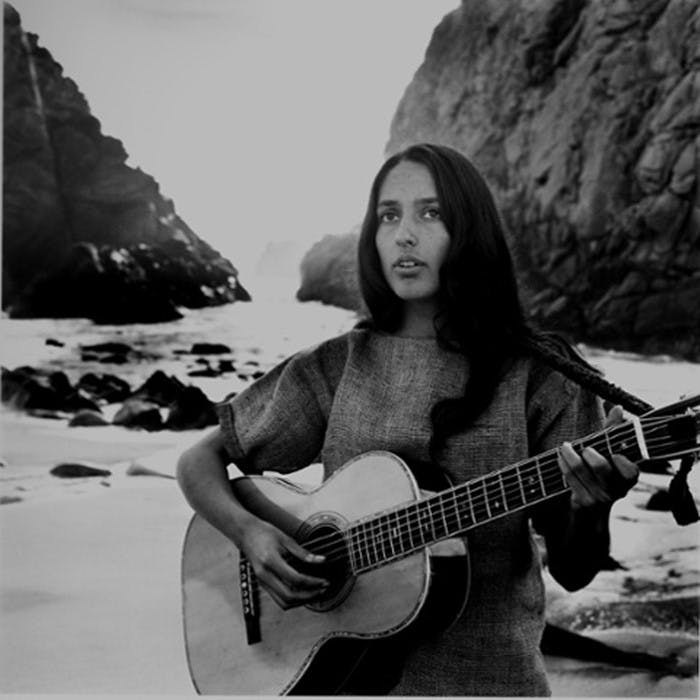 Image credit: Ralph Crane
Image credit: Ralph Crane
eight. Hippie Pilus
Toward the latter one-half of the decade, the counterculture motion gained steam with the introduction of hippies into the mainstream. War protests, Woodstock and The Summer of Love challenged the more direct-laced, older generations, as did the increasingly long pilus that began showing up in hippie civilization. Men and women alike began growing out their locks into long, natural, unkempt styles that directly challenged the structured, glamorized looks of previous years. Musicians such equally Joan Baez, Janis Joplin and The Grateful Dead helped to popularize the free-flowing style.
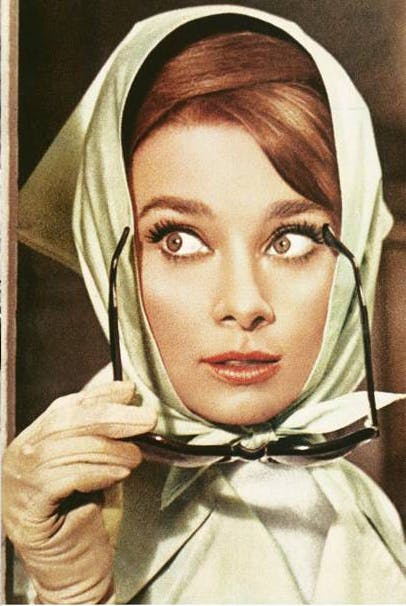 Epitome credit: Silver Screen Collection / Getty Images
Epitome credit: Silver Screen Collection / Getty Images
nine. Accessories
There was one thing that united the incredibly varied looks of the 1960s: pilus accessories. The decade saw an explosion of different accessories that were used to adorn and heighten unique styles. Jackie Kennedy's pill box hats, Grace Kelly'southward glamorous headscarves, along with ribbons, flowers and jewels paved the way for women to infuse fashion and fun into their hairstyles.
0 Response to "Hair Bun Fashion in the 1960s"
Post a Comment